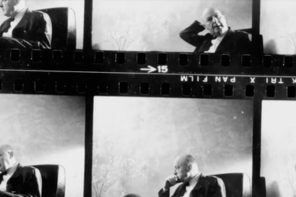Last night’s episode—officially titled “The Rains of Castamere,” though better known as “The Red Wedding”—not only left millions of viewers’ jaws on the floor, but it also emphatically reinforced the premise of George Schmidt’s popular take on morality in George R.R. Martin’s fictional land of Westeros (originally published 4/3/13). While it contains no direct spoilers from last night’s episode, keep in mind that the following essay contains a couple from the first two seasons. – the Editors
HBO’s Game of Thrones returned for its third season on Sunday having already inspired a variety of media, from a Helmut Lang line of clothing to satires like School of Thrones, Game of Cats, and a ’90s version of the opening credits (set, of course, to Queen’s “I Want It All.”) Like the novels on which the show is partly based, Game of Thrones has resonated with viewers in a way that only a handful of shows have.
Among nerds and an assortment of geeks, “the American Tolkien,” to quote Lev Grossman, has always held a degree of interest, but it took HBO’s Emmy award-winning adaptation of George R.R. Martin’s work to make it a fashionable topic among the wilder shores of journalism and academia. In fact, Wiley, the same publishers who brought us titles like Transformers and Philosophy, released an addition to their “And Philosophy” book series called—you guessed it—Game of Thrones and Philosophy.
As refreshing as it might be to see intellectuals taking an interest in popular culture, their approach tends to be overly reverential, unconcerned with the quality of the work itself. It took the writers of Saturday Night Live to uncover the adolescent-boy ideology at work in the frequent and gratuitous nudity and violence, depicting Martin’s collaborator in the HBO series as a 13-year-old boy by the name of Adam Friedberg.
Regardless of Friedberg’s influences, the HBO series and particularly the novels collectively referred to as A Song of Ice and Fire have not gained currency simply by speaking to capitalism’s ever-increasing demand for gore and female objectification. Rather, Martin’s work speaks to the progressively complex power dynamics we must navigate and make sense of in a post-Cold War world.
If J.R.R. Tolkien and his work exemplify the Christian idealism that embodied the Cold War era, then George R.R. Martin illustrates the logic of a theology that has seen the collapse of the Soviet Union and the disappearance of clear oppositions, which once enabled easy discrimination between friend and enemy. As the American Tolkien, Martin’s work illustrates the blurring of this friend/enemy dichotomy that is not necessarily unique to this era’s state of perpetual conflict. Indeed, the series can be read as an argument for Reinhold Niebuhr’s Augustinian realism, a philosophical perspective that was reacting to what was seen as the naïve work of the Social Gospel movement in negotiating the antagonistic dimension of social and political situations.
No Place for Hobbits
In The Lord of the Rings, two hobbits, whose kind are “neither renowned as great warriors, nor counted among the very wise,” defeat the Dark Lord Sauron through what can only be described as hobbit-banality. A story arc that concludes with the good and humble triumphing over the evil and powerful reveals Tolkien’s association with the ethics that are exemplified in the Beatitudes.
While beauty, truth, and goodness are neatly packaged in elven queens and Dúnedain rangers, filth, deceit, and evil are clearly stabilized in orcs, goblins, and the dark-skinned “Men of the East.” Written partly during World War II, The Lord of the Rings predicts the logic of the Cold War, which was designed to maintain stability by simplifying complex relations in terms of ideal oppositions like East/West, communism/capitalism, evil/good, faithless/faithful, etc. This logic frames the world in terms of a strict idealism (ideal in the political sense), where walls—whether they be literal, ideological, or rhetorical—defined identity: the Berlin Wall, the Black Gate of Mordor, etc. With the increasing irrelevancy and impotence of such walls, however, Tolkien seems increasingly anachronistic.
To be sure, if the dense Samwise Gamgee and the softhearted Frodo Baggins were to set off in Westeros—the continent where Martin’s series largely takes place—their tender hobbit hearts would bring them, and most likely everyone around them, to disaster. Not that strong and noble figures like Aragorn would fare much better; for as Martin’s novels make clear, defined principles and the strong conviction to adhere to them can often be tantamount to stupidity.
Ironically, Sean Bean, the same actor who played Boromir in the film adaptation of The Lord of the Rings, plays the central protagonist of the first season—in so far as a protagonist can exist in such a series. In place of the aggressive and easily corrupted Boromir, Bean cultivates an honorable and selfless highborn in his portrayal of Lord Eddard Stark, the newly appointed Hand of the King.
If there is a clear paradigm for understanding the distinction between Tolkien’s Christian idealism and Martin’s Christian realism, the office of the Hand of the King is it. For it is here that we locate a Tolkienesque character with all the Manichean logic of an Aragorn forced, by his close friend the king, into an office that demands one to “play the game.” And as the tagline of the show says, “In the game of thrones, you win or you die.”
For those who have seen the first season, it begins as do many fairy tales with the brave soldier (Eddard Stark) setting out to defeat the wicked queen (Cersei Lannister). Over the course of the season Eddard discovers that his old friend the king has no legitimate heirs, though the queen has given birth to three illegitimate children through her incestuous couplings with her brother. And what is a noble man do with this information, but to privately inform the queen so that she might flee with her children, of course. Shortly thereafter, the king is assassinated under the pretense of a hunting accident, and Eddard is imprisoned as a traitor before (spoiler alert!) he is executed in front of his two daughters.
Your Mercy Killed the King
Placing traditional theodicy aside for a moment, the question after all this misery is simple: Why did Eddard die? At the outset, identifying Eddard’s death as a simple tragedy misses an important point that is often made by Christian realists. Tragedy, as Reinhold Niebuhr observed in The Irony of American History, elicits “admiration as well as pity” for a man like Eddard. We pity him for such a terrible finality while we admire his conviction and compassion for Cersei and her children.
However, tragedy does not account for the way in which, to quote Niebuhr once again, “virtues are vices.” This lack of dialectical thinking, according to which human agency is essentially either virtuous or sinful, is unthinkable in Christian realism. An idealist who quickly classifies an event as tragic fails to take into account the evil that is an “inevitable consequence of the exercise of human creativity”: the evil that is in the good.
Irony, however, notes that the very quality that made Eddard worthy of praise ultimately led to his downfall. For Niebuhr, irony is fundamentally a religious category, presupposing a divine judge who “laughs at human pretensions without being hostile to human aspirations.” The Christian realist interpretatively locates irony in spaces of “hidden meaning” that “elicit not merely laughter but a knowing smile.” This “knowing smile” in turn acknowledges the failings in the virtues themselves by revealing absurd juxtapositions of “strength and weakness; of wisdom through foolishness; or foolishness as the fruit of wisdom; of guilt arising from the pretensions of innocency; or innocency hiding behind ostensible guilt.”
Lord Varys, the king’s master of spies, makes this very Augustinian point when he visits Eddard in prison to ask what kind of madness could have prompted him to tell the queen that he’d learned of her fornication. As an idealist who hasn’t yet learned politics’ most vicious lesson, Eddard answers, “The madness of mercy. That she might save her children.” To which Varys responds: “Ah, the children. It’s always the innocents who suffer. It wasn’t the wine that killed Robert, nor the boar. The wine slowed him down and the boar ripped him open, but it was your mercy that killed the king.”
Upon the execution of Eddard Stark, in perhaps the major juxtaposition of the series thus far, Tyrion Lannister is then appointed to the newly vacant office of Hand of the King. Eddard’s moral sentimentalism prompts his trusting of those who would ultimately betray him, whereas Tyrion devises elaborate ruses to trick would-be enemies. Unlike Eddard, Tyrion is not deluded by moral illusions and therefore capable of predicting the direction of self-interest in the pursuits of those around him.
Where he criticized Eddard, Lord Varys commends Tyrion, saying, “You’re quite good at being Hand, you know. Jon Arryn and Eddard Stark were good men, honorable men. But they disdained the game and those who play it. You enjoy the game. And you play it well.”
The nature of such juxtapositions is precisely what Niebuhr analyzes in The Children of Light and the Children of Darkness, in which he argues that the children of dark (Tyrion) are wiser than the children of light (Eddard) because they take all “factors in a social and political situation, which offer resistance to established norms, into account, particularly the factors of self-interest and power.”
What one should resist concluding at this point, however, is a purely egotist alliance with power and the children of darkness at the expense of any moral dimension. People tend to read the lesson of Christian realism without its religious dimension, as if one is determined, or perhaps doomed, to live in the world of power politics. Such is the case with Realpolitik strategies, which invariably destroy their very reason for existence, revealing the nihilism of pure power politics.
It’s the charge of the transcendent that differentiates Christian realism from pure realism. Which is to say that Christian realism’s emphasis upon transcendence, provides an enduring, critical judgment, centered on the Gospel, upon any accommodation of the ideal in politics. In Simon Critchley’s formulation, this imperative is experienced as an “infinite demand” that interrupts the politics of accommodation that so often weigh down realist efforts. Christian realism, in other words, finds its fulfillment in a synthesis between the two Hands of the King, Eddard Stark and Tyrion Lannister.
Perhaps this synthesis is embodied in the liberationist figure of Daenerys Targaryen (for the true Martin nerds out there, perhaps the second coming of Azor Ahai—the “prince[ss] that was promised”), who frees slaves, liberates cities, and claims whole groups of conquered women as handmaidens to prevent them from being raped by Dothraki warriors. What we find in the figure of Daenerys is an interruption of pure realism (both politically and metaphysically) by way of an eruption of the transcendent.
Recall, for example, the episode “Valar Morghulis” (valyrian for “all men must die”). Weeping tears of joy in the presence of the husband and child she thought dead, Daenerys hears the echo of her fledgling dragons’ cry. This call by her ultimate concern disrupts the virtual space generated by the blue-lipped warlocks of Qarth (known as the Undying), which allows her to sublimate her egoistic impulses and leave behind the illusion of her breathing husband and child whom she could have chosen to stay with.
Having been told that entering the House of the Undying to rescue her dragons was impossible, Daenerys’ faith in “her own magic” and her love for the “only children [she] will ever have” allows her to do what the pure realist says cannot be done. Perhaps Martin is not only showing us the necessity of realism, but also the way out of it.



